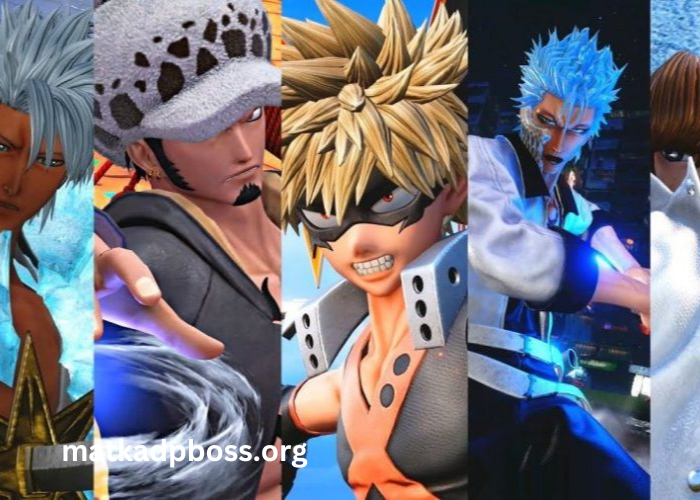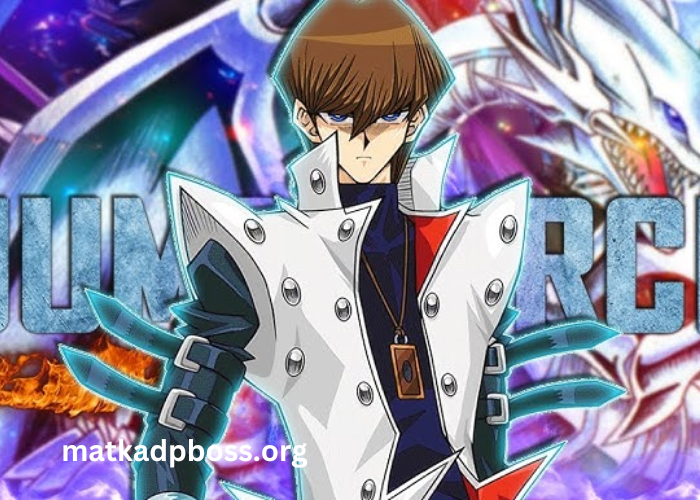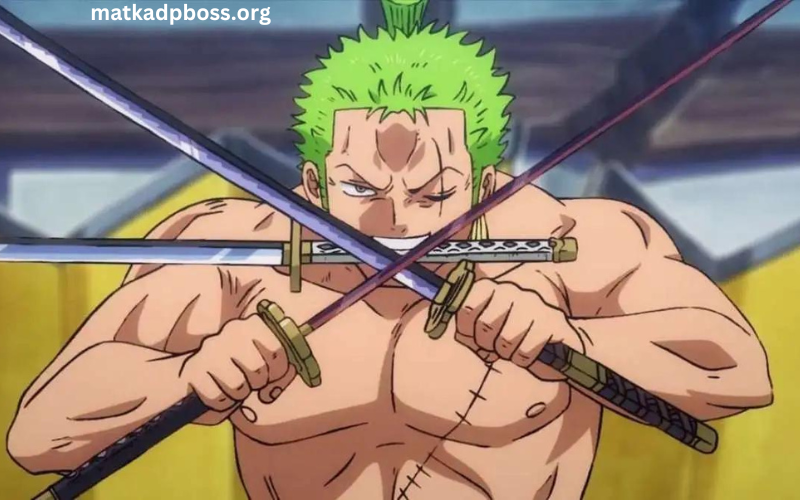Anime has captivated audiences around the world with its unique storytelling, vibrant characters, and imaginative worlds. One recurring element in many anime series is the concept of theanime:4ewcqlhtkci= Enemy. This term encompasses not just the typical villains, but also complex characters who challenge the protagonists in various ways. Understanding how these enemies are portrayed can enhance our appreciation of the narratives and the moral dilemmas faced by the characters. In this blog post, we will explore the definition of an enemy in anime, types of enemies, notable examples, and the role they play in character development and thematic exploration.
What Defines an Enemy in Anime?
In anime, the termanime:4ewcqlhtkci= Enemy can be broadly defined as any character or force that opposes the protagonist. However, this definition can be nuanced. An enemy may not always be a villain in the traditional sense; they can also represent internal struggles, societal challenges, or even other characters with differing ideologies. The complexity of an enemy often adds depth to the storyline, forcing protagonists to confront their beliefs and values.
For instance, inAttack on Titan, the Titans are initially viewed as mere monsters. However, as the series progresses, the true nature of these enemies is revealed, presenting moral complexities that challenge the protagonist’s understanding of good and evil. Thus, an enemy in anime is not merely an obstacle to be overcome but often a reflection of the protagonist’s journey.
What Are the Different Types of Enemies in Anime?
The world of anime presents a diverse array of enemies, each serving a unique purpose within the story. One common type is theanime:4ewcqlhtkci= Enemy who embodies pure evil, often with malicious intent. Classic examples include villains like Frieza fromDragon Ball Z and Orochimaru fromNaruto. These characters are driven by power, revenge, or chaos, creating immediate conflict with the protagonist.
Another type is the tragic enemy, who often has a backstory that elicits sympathy. Characters like Zuko fromAvatar: The Last Airbender or Guts’s nemesis Griffith fromBerserk exemplify this complexity. Their journeys involve personal struggles that may lead them to clash with the hero, yet their motivations provide a deeper understanding of their actions.
Moreover, there are ideological enemies, such as Light Yagami fromDeath Note. Here, the conflict arises from differing moral philosophies. This type of enemy challenges the protagonist’s worldview, making them question their own values and choices.
How Do Enemies Contribute to Character Development?
The presence of ananime:4ewcqlhtkci= Enemy is crucial for character development. They serve as catalysts for growth, pushing protagonists to evolve in response to the challenges posed. For instance, inMy Hero Academia, Izuku Midoriya faces multiple enemies who test his abilities and resolve. Each encounter not only hones his skills but also shapes his understanding of heroism and responsibility.
Additionally, the protagonist’s relationship with their enemies can reflect their internal struggles. InNaruto, the rivalry between Naruto Uzumaki and Sasuke Uchiha exemplifies this. Their conflict is rooted in their differing paths and ideologies, forcing both characters to confront their emotions, fears, and desires. Through these encounters, they both grow and ultimately influence each other’s development.
Enemies also provide a mirror for protagonists, revealing their flaws and vulnerabilities. This reflective aspect can lead to significant character arcs that resonate with audiences. For example, inHunter x Hunter, Gon Freecss faces various enemies that highlight his naivety and determination, ultimately leading to profound personal revelations.
What Role Do Enemies Play in Thematic Exploration?
In addition to character development, enemies in anime play a vital role in exploring various themes. The concept of theanime:4ewcqlhtkci= Enemy often serves to address societal issues, moral dilemmas, and the nature of humanity. Through their conflicts, anime can critique power structures, question morality, and explore the complexities of human emotions.
For instance,Fullmetal Alchemist tackles themes of sacrifice and the consequences of ambition through its enemies, who represent the darker aspects of human nature. Characters like Father and Envy embody the dangers of unchecked ambition and the pursuit of power, prompting viewers to reflect on their own values and decisions.
Moreover, enemies can also represent internal conflicts, illustrating the struggle between good and evil within oneself. InDemon Slayer, Tanjiro Kamado faces demons that are not only physical threats but also symbolic representations of loss, grief, and vengeance. This layered storytelling allows for a richer exploration of emotional depth and moral complexity.
Can Enemies Become Allies?
One intriguing aspect of theanime:4ewcqlhtkci= Enemy trope is the potential for enemies to evolve into allies. This transformation can add unexpected twists to the narrative and deepen character relationships. A well-known example is Vegeta fromDragon Ball Z, who initially appears as a ruthless antagonist but eventually becomes one of the series’ most beloved heroes.
The dynamics of this transformation often rely on shared goals or mutual understanding. InOne Piece, characters like Nico Robin and Trafalgar Law start as enemies but later ally with the Straw Hat Pirates. These shifts can enhance the storyline by introducing themes of redemption, forgiveness, and the complexity of human relationships.
Such transformations challenge the notion of absolute good and evil, emphasizing that characters are often shaped by their circumstances and choices. This exploration of character fluidity adds depth to the narrative, inviting audiences to reconsider their perceptions of morality.
How Do Cultural Differences Affect Enemy Portrayals?
Cultural context significantly influences the portrayal of theanime:4ewcqlhtkci= Enemy. Different cultures may have varying perceptions of heroism, villainy, and moral ambiguity, which can shape how enemies are depicted in anime. For instance, Western narratives often present clear-cut distinctions between heroes and villains, while many Japanese anime explore more complex, morally ambiguous characters.
In some anime, enemies may reflect societal issues, such as systemic oppression or existential dilemmas. For example,Tokyo Ghoul presents ghouls as enemies who challenge the established order, raising questions about discrimination and identity. This nuanced portrayal encourages viewers to examine societal structures and their implications on individual lives.
Moreover, cultural traditions and historical events can inform the characteristics of enemies. The portrayal of samurai or ninja as adversaries in certain anime draws on historical narratives and legends, blending fiction with cultural heritage. This connection enriches the storytelling, allowing audiences to engage with the material on multiple levels.
What Are Some Iconic Enemies in Anime?
Throughout anime history, many enemies have become iconic figures, leaving lasting impressions on fans. Characters like Shogo Makishima fromPsycho-Pass and Doflamingo fromOne Piece exemplify the multifaceted nature of anime enemies. Shogo Makishima’s philosophical stance against a controlling society challenges the status quo, prompting viewers to question authority and morality.
Similarly, Doflamingo’s cunning and manipulative nature make him a formidable opponent, embodying the complexities of power and ambition. These characters not only serve as obstacles to the protagonists but also as vessels for thematic exploration and moral inquiry.
Another notable enemy is Hisoka fromHunter x Hunter, whose unpredictable nature and complex motivations make him both captivating and unsettling. Hisoka’s character blurs the lines between antagonist and ally, highlighting the intricacies of human desires and ambitions.
These iconic enemies have become emblematic of the themes they represent, contributing to the rich tapestry of storytelling within anime.
How Does the Concept of Enemy Evolve Over Time?
As anime continues to evolve, so does the concept of theanime:4ewcqlhtkci= Enemy. Contemporary narratives increasingly challenge traditional tropes, introducing more layered and relatable antagonists. The shift reflects a growing understanding of character complexity and the need for more nuanced storytelling.
For example, recent series often feature enemies with relatable motivations and backstories, blurring the lines between good and evil. This evolution encourages audiences to empathize with characters, regardless of their roles in the narrative. It fosters a more profound connection to the themes explored, allowing viewers to engage with moral dilemmas on a personal level.
Moreover, the rise of digital platforms and global audiences has diversified the portrayal of enemies, incorporating various cultural perspectives. This evolution invites a broader range of stories and character types, enriching the anime landscape.
Conclusion
In conclusion, the concept of theanime:4ewcqlhtkci= Enemy is a multifaceted aspect of storytelling in anime. From classic villains to complex characters with relatable motivations, enemies play crucial roles in character development, thematic exploration, and moral inquiry. The evolution of these portrayals reflects broader societal changes and a deeper understanding of human complexity.
As anime continues to captivate audiences, the portrayal of enemies will undoubtedly adapt, presenting new narratives that challenge our perceptions of good and evil. By examining the intricacies of these characters, we gain a richer appreciation for the art of storytelling in anime, reminding us that every enemy may also be a reflection of our own struggles and journeys.




